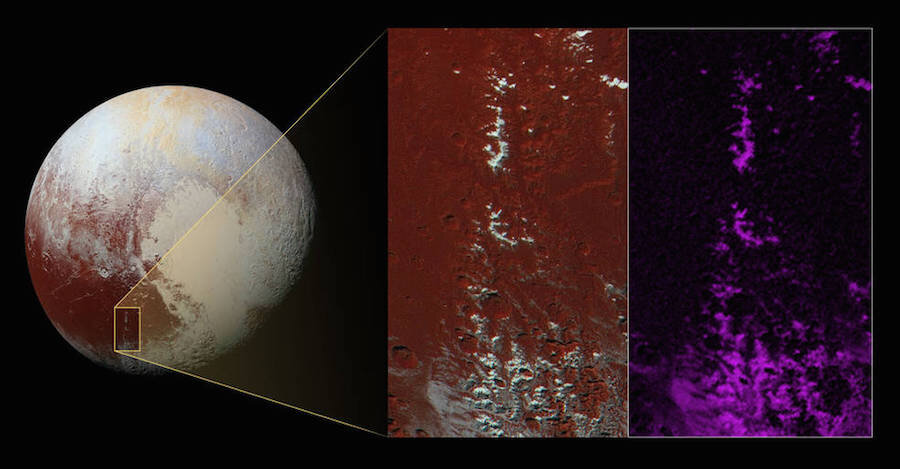Scientists confirm snow on Pluto, but what is it made of?
Loading...
NASA’s New Horizon team has discovered Pluto may be a snowy destination for any future visitors.
Images from the New Horizon space probe show what appears to be snowcapped mountains on the surface of the dwarf planet. The white peaks dot a small portion of the diverse landscape that makes up Pluto.
One of Pluto’s most identifiable surface features is a swath of dark-colored landmass known as Cthulhu, named after an H.P. Lovecraft creature. Against that dark area, a little bigger than the state of Alaska in size, the snow-capped mountains contrasted sharply for New Horizon’s cameras.
Despite the claim of "snow on Pluto," it’s unlikely that the alien snow would pass for familiar Earth snow.
“Scientists think this bright material could be predominantly methane that has condensed as ice onto the peaks from Pluto's atmosphere,” NASA states in its press release.
Pluto's surface consists primarily of nitrogen ice along with some methane and carbon. Scientists with the New Horizons team suspect that even Cthulhu’s dark surface is composed of methane tholins, which form when methane receives prolonged exposure to ultraviolet light, according to NASA.
The snow is likely another layer of methane, while snow on Earth is crystalline water ice that has frosted. The chemical compositions of the two snows would be entirely different, but the fact that both materials are found in similar terrain suggests another discovery for the New Horizons team.
"That this material coats only the upper slopes of the peaks suggests methane ice may act like water in Earth's atmosphere, condensing as frost at high altitude," said New Horizons science team member John Stansberry in the press release.
Pluto’s surface ranges in temperature from 375 to 400 degrees below zero (Fahrenheit), according to NASA. Scientists with New Horizons saythe extreme cold could cause methane, found only in gas form on Earth, to act on Pluto like water acts on Earth.
The images above show the snow-covered mountain range identified by researchers. The coloring of the images has been enhanced by the New Horizon team to contrast the difference between the white snow dotting the peaks to the dark red craters and smooth surface of Cthulhu below.
New Horizons used the Ralph/Multispectral Visible Imaging Camera to determine that the snow correlates with how methane ice is typically distributed on the planet, which is shown in purple as an aid, according to the press release.
The pictures were taken more than 21,000 miles above the surface – some of the closest images ever taken of the icy dwarf planet. Pluto's orbit around the sun typically keeps it at around 3.6 billion miles away, more than 40 times the distance from the sun to Earth.






